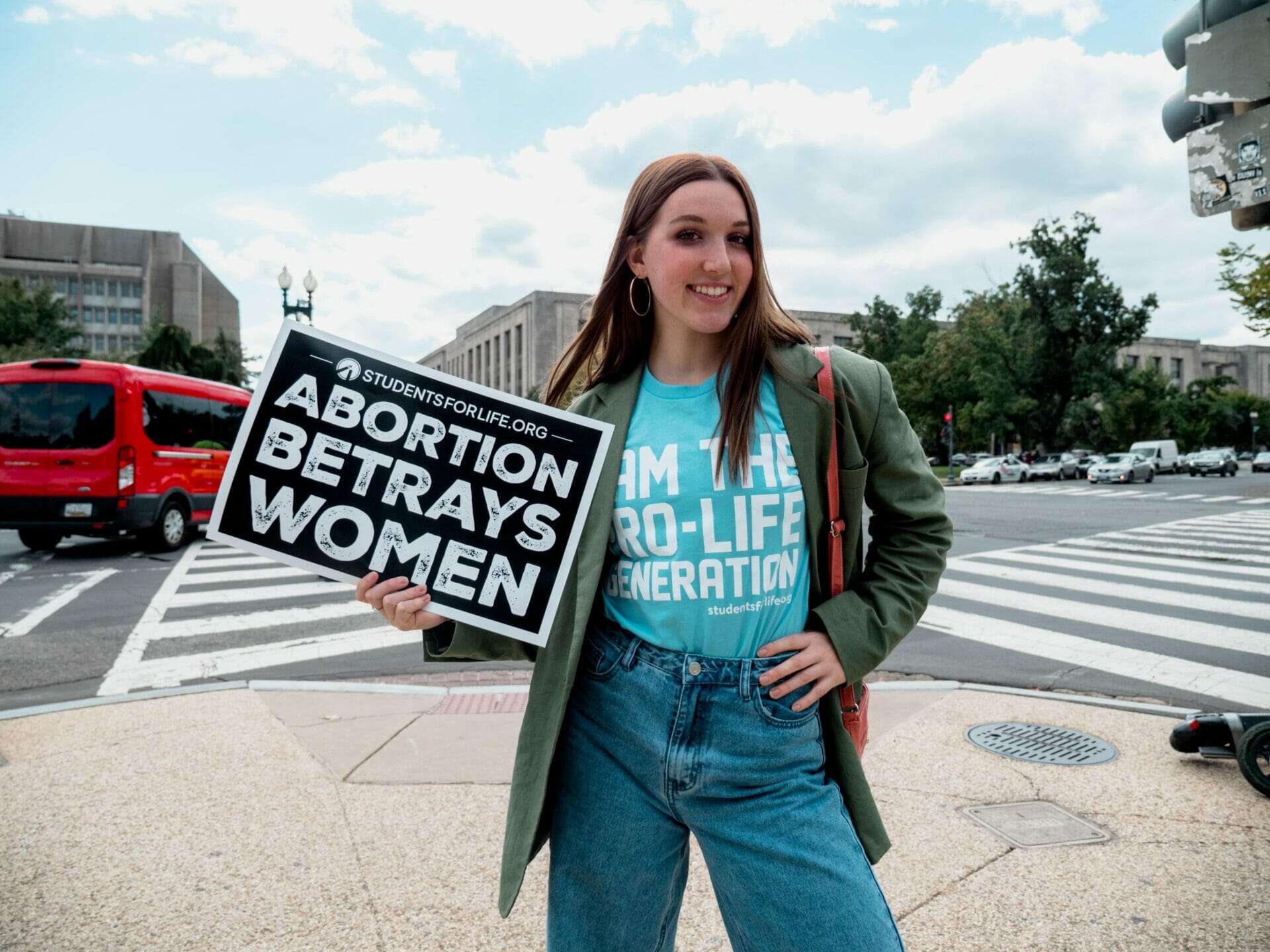
This post was written by Ingrid Skop, M.D., FACOG and reposted with permission of the Charlotte Lozier Institute.
It is a scientific fact that the embryo or fetus within the mother’s womb is a distinct human being, and, consequently, abortion ends the life of that human being.[1] Despite this scientific consensus,[2] the American public are evenly split regarding their feelings about abortion. Some oppose abortion for religious reasons, citing the Bible’s statement that God created men and women in His own image.[3] Some oppose abortion as a human rights violation, as it takes away the most fundamental human right: the right to life.[4] Others, however, while not denying the humanity of the unborn, argue that women are generally benefited by abortion to such an extent that the loss of human life involved is outweighed by the well-being conferred on women.
Many who make this argument rely, explicitly or implicitly, on two underlying assumptions. The first is the empirical assumption that the happiness or well-being of women is generally improved by abortion. The second is the theoretical assumption that a utilitarian approach to ethics is correct,[5] according to which any action is in principle permissible (including killing the innocent) as long as it helps to maximize the total amount of happiness in society. It follows from this utilitarian ethic that abortion is permissible as long as the mother’s resultant happiness outweighs any happiness lost from the unborn child’s death.
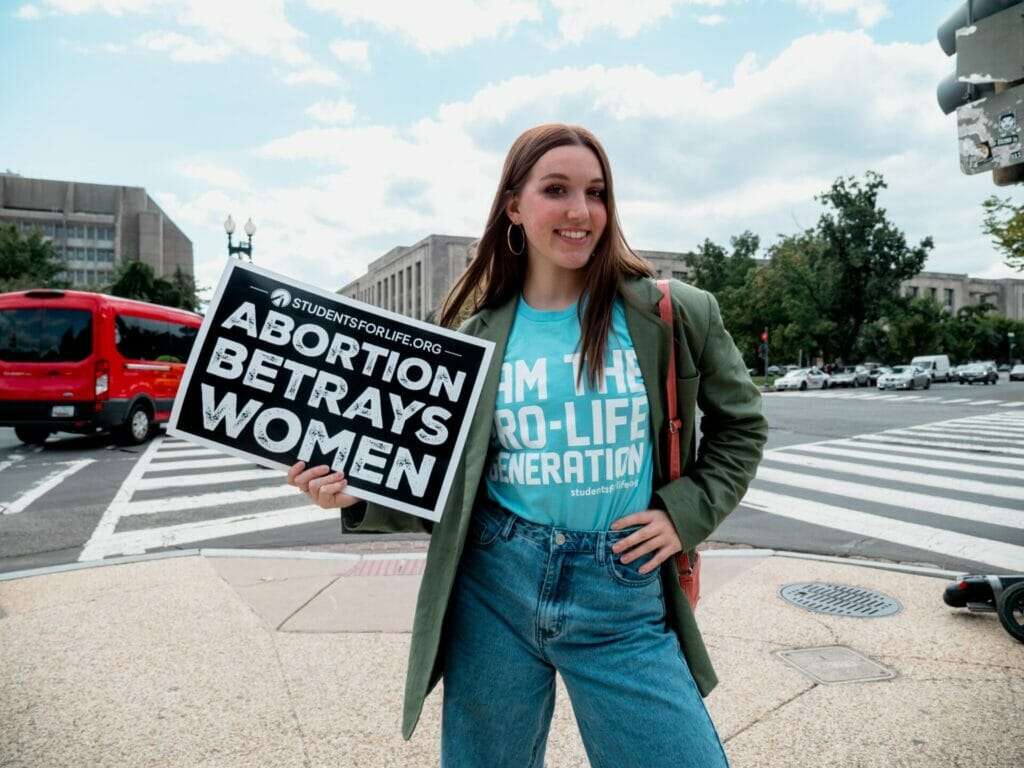
While the utilitarian ethic undergirding this line of argument is highly questionable,[6] it’s worth considering whether women do, in fact, benefit as a whole from abortion. This paper summarizes some of the many reasons to question this claim, showing both that there is little reason to think abortion benefits women, and that women are often actively harmed by abortion. If it turns out false that abortion generally improves the lives of women, then there are few reasons, even from a utilitarian perspective, to justify ending these young human lives through the violence of abortion.
Physical harm from surgical abortion
Some who make this utilitarian argument might assume that surgical abortion carries no significant risks of harm to women. However, although most women will not experience severe complications from surgical abortion, significant risks of harm do exist. Many complications can occur from any surgical abortion procedure, including hemorrhage, infection, retained pregnancy tissue, damage to the cervix, damage to the uterine lining, uterine perforation or rupture, injuries to surrounding organs, anesthetic reactions, overdoses, various embolisms, cardiac or cardiovascular events, and rarely, maternal death.[7]

Deficiencies in U.S. abortion complication data collection hinder documentation of the magnitude of these risks, but it appears that complications follow at least 1-2% of suction aspiration abortions (the procedure performed in the first trimester).[8] Moreover, politicization of abortion provision has led to health department and medical board failure to supervise abortion providers, some of whom employ poor quality surgeons, leading to unexpected and severe complications.[9] Such a permissive regime of abortion regulation puts women at further risk of complications from surgical abortions than they otherwise would be.
Physical harm from chemical abortion
Chemical abortions performed with mifepristone and misoprostol are associated with frequent complications,[10] requiring surgical completion for failed abortion in approximately one in twenty women when used according to the FDA’s protocols.[11] Overall, complications occur four times as frequently after chemical than surgical abortions.[12] The FDA’s recent decision to loosen safeguards, allowing chemical abortion use without any medical supervision, will likely lead to even more complications.[13],[14] When access to mifepristone is limited, abortion advocates will sometimes direct women toward using misoprostol alone, which fails even more frequently, requiring surgical completion in as many as 22% of women.[15
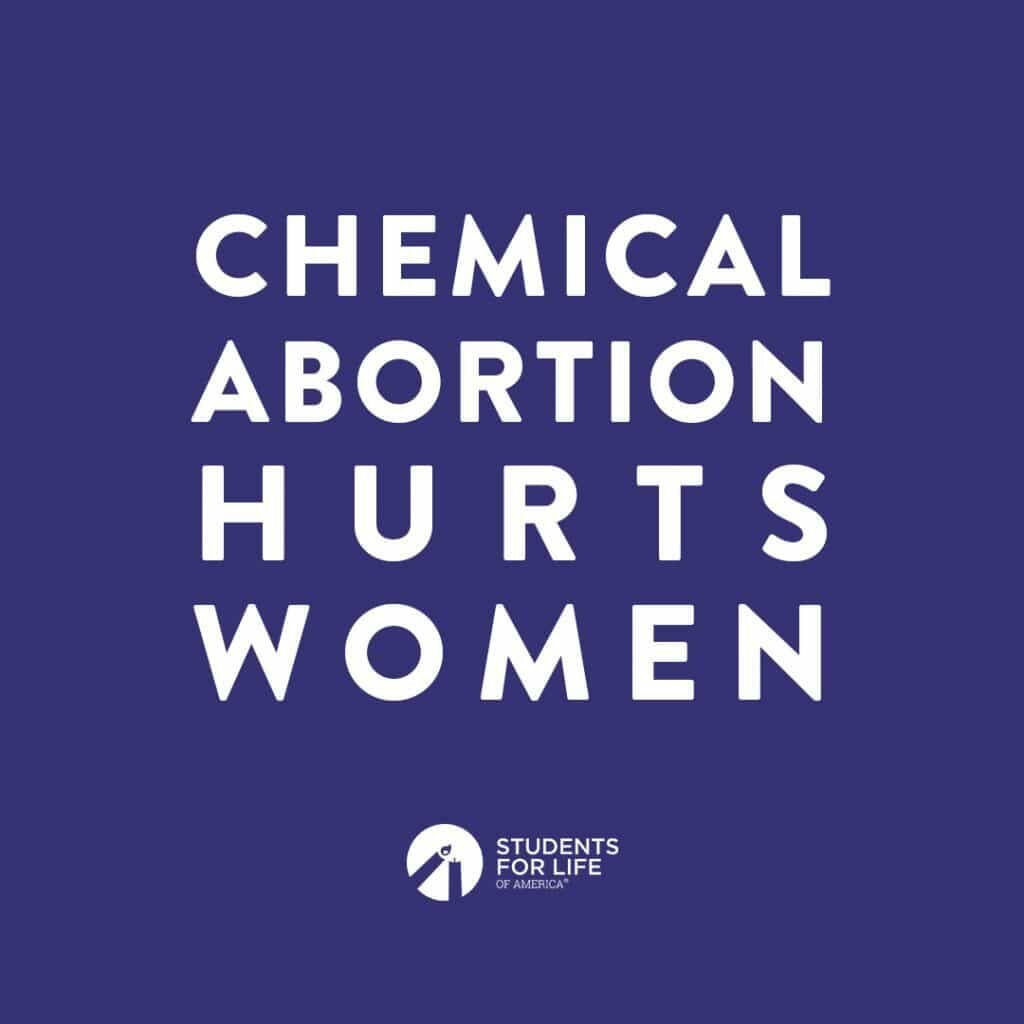
Harms of late-term abortion complications
Late abortions are associated with a higher incidence of complications compared to earlier abortions.[16] Abortion becomes more likely to result in complications or death the later in pregnancy that it occurs, due to the anatomical and physiologic changes that occur as the pregnancy advances. Moreover, due to the calcification of fetal bones after the first trimester, a dilation and evacuation (D&E) abortion requires stretching open a strong muscular cervix and dismembering the fetus by multiple passages of the surgeon’s instruments into the uterus, which could easily result in physical damage to a woman, even in experienced hands. The CDC has documented that the risk of maternal death from abortion increases by 38% for each additional week beyond eight weeks’ gestation, rising to a 76-fold higher risk of mortality in the late second trimester.[17]
Long-term abortion complications affecting future pregnancy outcomes
Uterine or cervical damage from surgical abortion may cause adverse future pregnancy outcomes. If severe, injury, infection, or scar tissue may cause infertility, or the inability to achieve a pregnancy when desired.[18] Studies and meta-analyses have also documented increased risks of preterm delivery and low birthweight babies after abortion, with higher risks related to multiple abortions, late abortions, or failed chemical abortion requiring surgical completion.[19] Additionally, uterine damage caused by abortion may result in subsequent abnormal placental attachment, leading to an abnormally invasive placenta (placenta accreta spectrum disorder) or tenuous attachment (placental abruption), both of which are linked to hemorrhage and adverse outcomes of future pregnancies.[20]

Mental health complications
Numerous studies[21] demonstrate that abortion is harmful to many women’s mental health, increasing the likelihood of anxiety, depression, substance abuse or overdose, excessive risk-taking behavior, self-harm, and suicide,[22] all of which have been shown to contribute to maternal mortality through “deaths of despair.”[23] Relatedly, high quality international records-linkage studies[24] demonstrate that the risk of death after abortion compared to childbirth from any violent cause is six times higher, suicide six to seven times higher, accidental death four to five times higher, and death by homicide 10 to 14 times higher.[25] Some subpopulations are at increased risk of mental health harm after abortion, such as those who have a later abortion, abort at a young age, abort a desired pregnancy, have multiple abortions, or have a prior history of mental illness.[26]
The harm of unwanted abortions
It is usually assumed that most women in the U.S. freely choose abortion and consider it to have been the best decision for them, all things considered. However, an expanding body of literature calls this assumption into question. A recent peer-reviewed study conducted by CLI scholars[27] found that only one-third of abortions are “wanted.” Nearly one in four described their abortion as “unwanted” or “coerced.” An additional 43% described the abortion as “accepted” but “inconsistent with their values and preferences.” A majority, around 60%, said their preference would have been to give birth had they received more emotional support or had greater financial security.
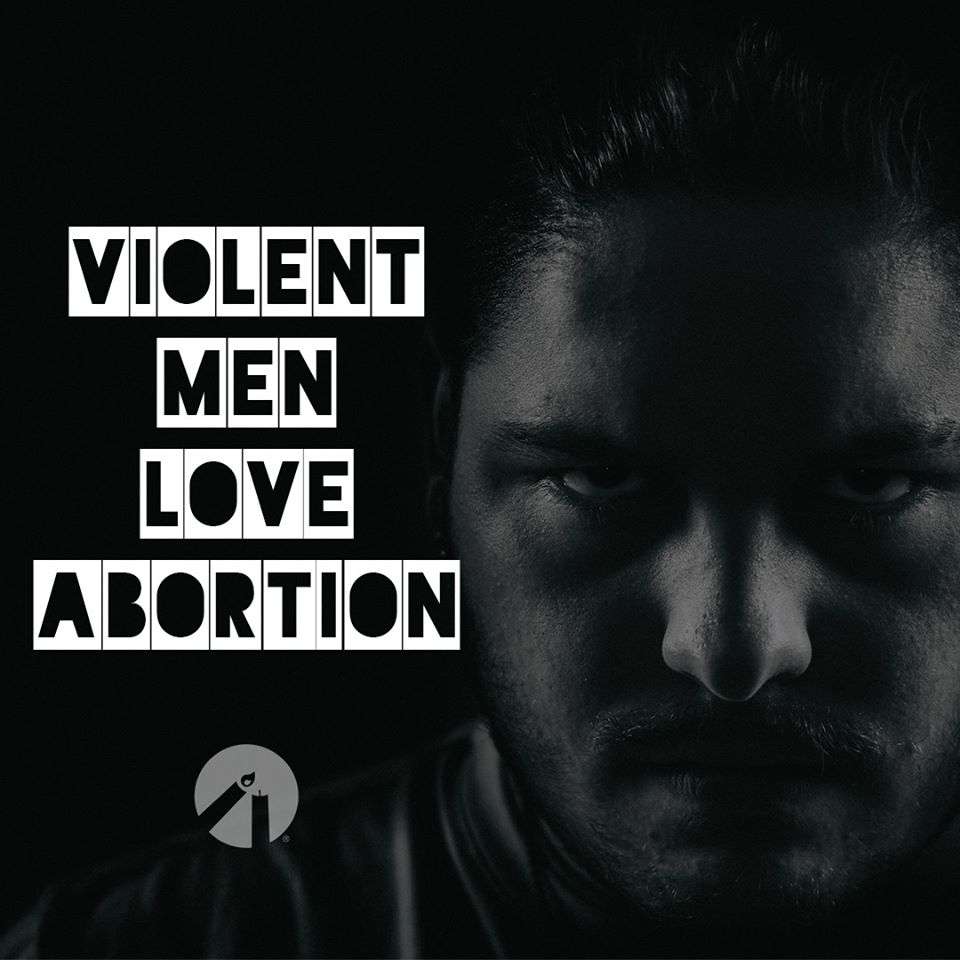
In another 2023 peer-reviewed survey, 61% of women reported “high levels” of pressure to abort. The same study found that perceived pressure to abort was strongly associated with more negative emotions, disruption of work and relationships, feelings of loss and grief, and a decline in overall mental health.[28] In a similar vein, affiliates of the pro-abortion organization Advancing New Standards in Reproductive Health published research indicating that only 42% of surveyed women said they “wanted pregnancy never” prior to the pregnancy they aborted. 34% of surveyed women said they wanted to be pregnant sooner or later prior to the aborted pregnancy, and 4% said they wanted to be pregnant at the time they became pregnant. The remaining 19% were unsure whether they wanted to be pregnant prior to the pregnancy that was aborted.[29]
Questioning the maternal mortality claim
Preventing pregnancy-related death (maternal mortality) is sometimes cited as one of the ways abortion benefits women. The claim is often made, for example, that the risk of death associated with childbirth is significantly higher than that associated with abortion.[30] However, a closer look at maternal mortality demonstrates that the relative risks are not so easy to determine based on U.S. data.[31] This is because deficiencies plague documentation of deaths related to abortion in the U.S., particularly mental health-related deaths,[32] rendering any firm conclusion drawn from this data questionable.[33] When comprehensive analysis of international records-linkage data is performed, however, it can be demonstrated that a woman is 2-4 times as likely to die from any cause, and 6-7 times as likely to die from suicide, within a year following an abortion compared to childbirth.[34]
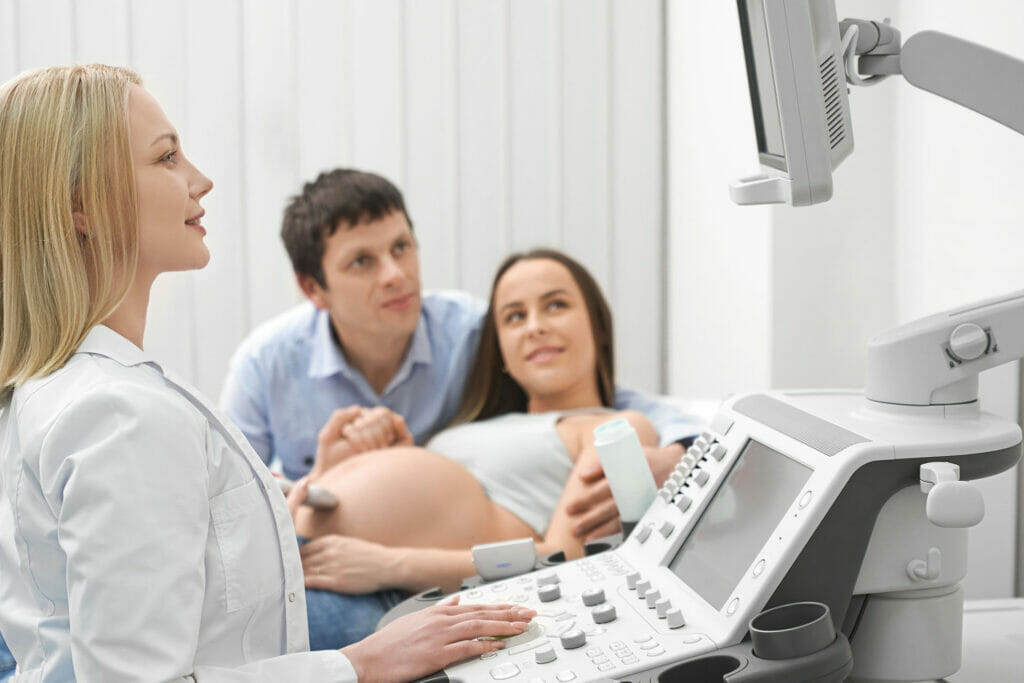
Moreover, examination of international trends demonstrates that maternal mortality does not inevitably increase after abortion restrictions are adopted. Chile, which had legal abortion from 1957-1988 and prohibited abortion from 1989-2007, found that maternal mortality declined despite the change in legal status of abortion as education and obstetrical care improved.[35] Similarly, Mexican data showed the 32 states that permitted abortion had a 30% higher maternal mortality ratio and an 89% higher abortion mortality rate than states with restrictive abortion laws.[36] Likewise, comparing the demographically similar countries of the Republic of Ireland and the United Kingdom with disparate abortion laws,[37] restrictive Ireland had a lower maternal mortality rate[38] than the permissive UK.[39] El Salvador, Poland, and Nicaragua all have seen their maternal mortality improve even after enacting abortion restrictions. South Africa, on the other hand, has seen maternal mortality worsen after the legalization of abortion.[40]
Questioning the claim of economic benefit
Another argument frequently made is that abortion benefits women financially and is necessary for their economic advancement. While women do frequently report financial insecurity as a reason for seeking abortion, and abortion would avoid the short-term costs related to childbirth and child-rearing, some interesting data trends call into question the notion that abortion generally confers a long-term economic benefit on women.[41]
If abortion has a positive impact on poverty rates, for example, one would (all else equal) expect the poverty rate for unmarried women without children to be lower than the poverty rate for unmarried women with children. But in fact, some research shows the opposite is the case. Prior to 1994, most abortions were performed on white women (60-70%). Since then, Black women have become overrepresented in abortion provision (accounting for 35-38% of all abortions, despite comprising only 15% of the population, with an abortion rate three times higher than that of white women). At the same time, however, poverty among Black women has increased. And as the percentage of abortions obtained by Black women has increased, the poverty gap between Black women with children and Black women without children (with higher poverty rates documented in the latter) has continued to expand. This is precisely the opposite of what one would expect if abortion generally improved financial outcomes for women.
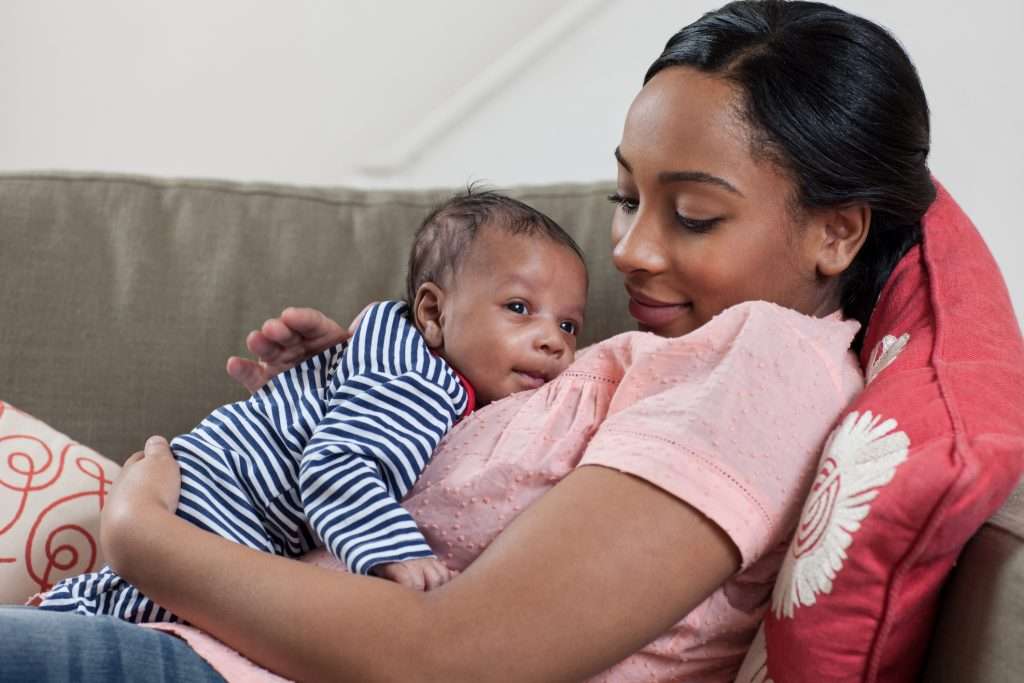
Further, a closer examination of other studies purporting to show a positive economic impact from abortion reveals subtle details that should be examined. For example, the baseline characteristics of the families of teenage girls experiencing abortion compared to those who give birth may be more supportive and economically advantaged, leading to better outcomes.[42] In such cases, then, it is not abortion per se that confers an economic benefit, but instead the independent economic advantage many abortion-seeking women already have.
Finally, a long-term natural experiment in Norway demonstrated a small short-term financial benefit from abortion but over time there was income convergence for both groups of women regardless of their abortion decisions.[43]
Summary of harms
Taken together, this evidence undermines the pro-abortion utilitarian’s claim that abortion benefits women overall, increasing their happiness and well-being. On the contrary, abortion often results in physical complications (especially following medically unsupervised chemical abortion), mental health complications, future pregnancy complications, and the tragic loss of a child most women would have preferred to give birth to had they not been pressured, coerced, or lacked the support necessary to follow through with the pregnancy. It should also be noted that there is some evidence, particularly from Eastern Europe, that when abortion restrictions are enacted promiscuous behavior declines, effective contraceptive use increases, and unintended pregnancies decline—all of which might help lead to fewer abortions overall, and so fewer of the attendant harms to women.[44]
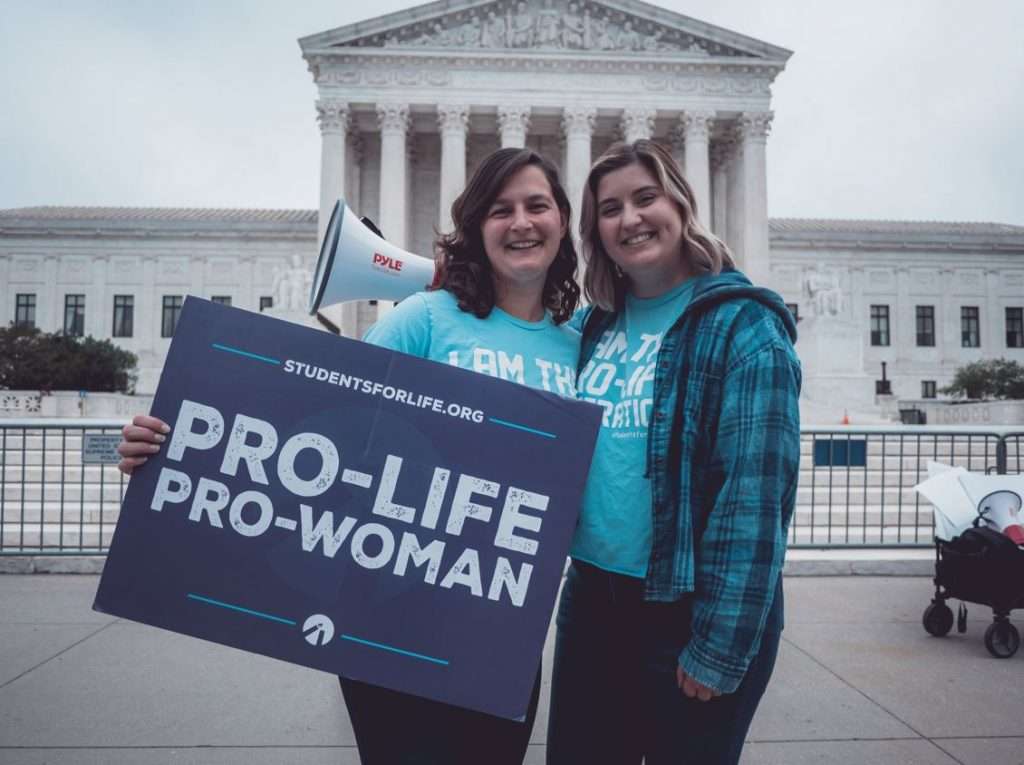
The mother, of course, is not the only human being harmed by abortion. But even taking only her well-being into serious consideration, as the pro-abortion utilitarian (wrongly) does, abortion still turns out to be a net harm to society.
Moving forward
Although pro-lifers who support abortion restrictions are frequently framed as “pro-forced birthers,” with the implication that once the abortion is prevented pro-lifers support no further assistance to a woman in crisis, the reality is far different. The provision of alternatives to abortion has been a key element of the pro-life movement since the firstpregnancy help centers (PHCs) were established more than 50 years ago.[45] There are currently around 3,000 PHCs in the U.S. alone and many others in at least 114 different countries.[46]
Additionally, state and federal pro-life policymakers have introduced and expanded funding for Alternatives to Abortion programs, including child and adoption tax credits, Medicaid expansion to cover postnatal care beyond the immediate postpartum period, expanding the Children’s Health Insurance Program (CHIP) to include unborn children, and the Title V Maternal and Child Health Block Grant. These programs all have the goal not only of supporting initial decisions for life, but also establishing paths forward by which women and families can thrive.[47]
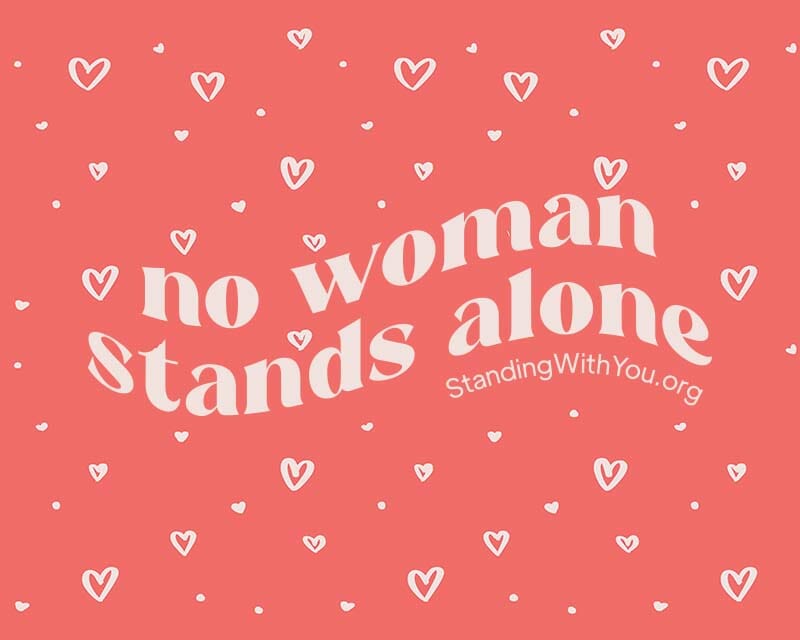
As an example of the holistic approach pursued by many pro-life organizations, consider Her PLAN, a project of Susan B. Anthony Pro-Life America Education Fund.[48] Her PLAN utilizes seven categories of care addressing the circumstances that cause women to resort to abortion, honoring and valuing the lives of both mother and baby and seeking to encourage family formation and enduring relationships. These categories include care coordination and mentorship; health and well-being services; financial assistance, work, and education; material and legal support; recovery and mental health services; assistance after prenatal diagnosis of life-limiting conditions; and resources to help care for children.
The federal Providing for Life Act, recently introduced by Representative Ashley Hinson and Senator Marco Rubio, also addresses many of the concerns that drive women toward unwanted abortions. If passed, it will provide tax breaks to working families (including a child tax credit covering unborn children), make the adoption tax credit fully refundable, enhance paid parental leave, extend the Special Supplemental Nutrition Program for Women, Infants, and Children (WIC) into the postpartum period, provide resources while a woman is continuing her education, and help to build support for new moms and their families in other ways.[49]
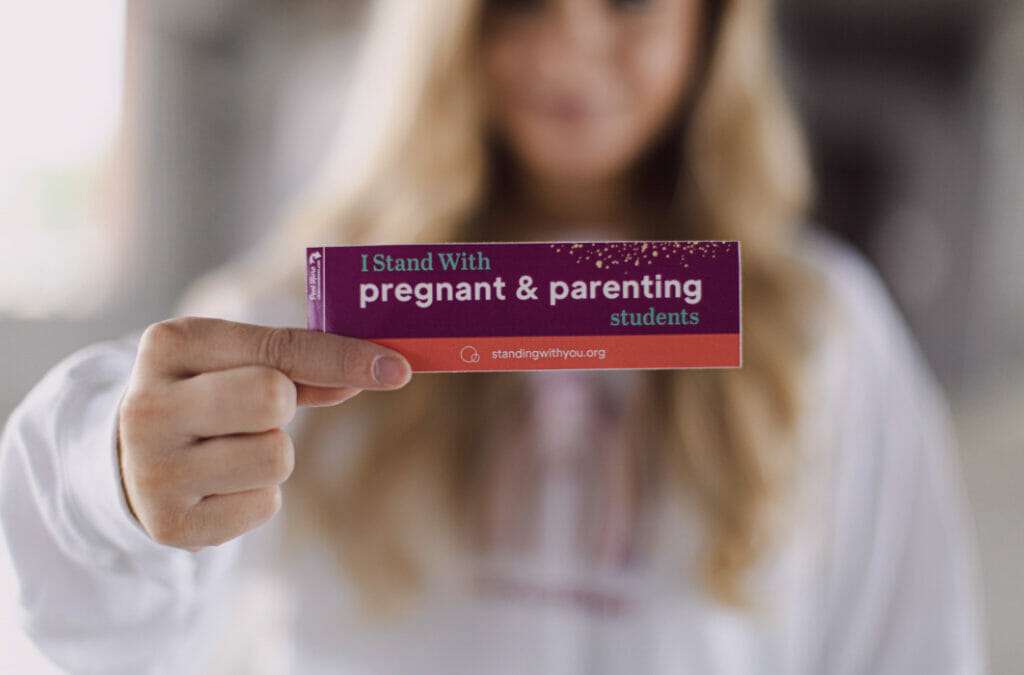
Surely all who profess to care for women should support actions such as these. Recognizing the pervasive harm to women (as well as their children and society at large) from widespread abortion, people of good will should come together to provide better options moving forward for all affected by crisis pregnancies. It is time to address the greatest human rights violation in our world today, the elective ending of unborn human life. We cannot justify this tragic act of violence by appeal to its purported benefits to women, while ignoring the clear evidence of harm to these women it leaves in its wake.
Ingrid Skop, M.D., F.A.C.O.G. is vice president and director of medical affairs at Charlotte Lozier Institute.
[1] Maureen Condic, “A Scientific View of When Life Begins,” Lozier Institute, June 11, 2014, https://lozierinstitute.org/a-scientific-view-of-when-life-begins/.
[2] Steven Jacobs, “Biologists’ Consensus on ‘When Life Begins,’” SSRN, July 25, 2018, https://papers.ssrn.com/sol3/papers.cfm?abstract_id=3211703.
[3] Genesis 1:27
[4] “A Secular Case Against Abortion,” Secular Pro-Life, accessed September 28, 2023, https://secularprolife.org/abortion/.
[5] “Consequentialism,” Stanford Encyclopedia of Philosophy, May 20, 2003, accessed September 28, 2023, https://plato.stanford.edu/entries/consequentialism/.
[6] Stephen Nathanson, “Act and Rule Utilitarianism,” International Encyclopedia of Philosophy, Arguments against Utilitarianism: The “Wrong Answers” Objection, accessed September 28, 2023, https://iep.utm.edu/util-a-r/#SH3b
[7] Ingrid Skop, “Immediate Physical Complications of Induced Abortion,” Lozier Institute, September 28, 2023, https://lozierinstitute.org/immediate-physical-complications-of-induced-abortion/.
[8] Maarit Niinimäki, Anneli Pouta, Aini Bloigu et al., “Immediate Complications after Medical Compared with Surgical Termination of Pregnancy,” Obstetrics & Gynecology 114, no. 4 (October 1, 2009): 795–804, doi: 10.1097/aog.0b013e3181b5ccf9.
[9] James Studnicki et al., “Doctors Who Perform Abortions: Their Characteristics and Patterns of Holding and Using Hospital Privileges,” Health Services Research and Managerial Epidemiology 6 (January 1, 2019). doi: 10.1177/2333392819841211; Nora Sullivan, “Gosnell Case Demonstrates Need for Rigorous Clinic Inspections,” Lozier Institute, April 2, 2013, https://lozierinstitute.org/gosnell-case-demonstrates-need-for-rigorous-clinic-inspections/; Jeremy Borden, “Audit: Oversight of S.C. Abortion Clinic Needs Improvement,” Post and Courier, May 5, 2015, https://www.postandcourier.com/politics/audit-oversight-of-s-c-abortion-clinics-needs-improvement/article_483029a3-2bdc-576e-b9b7-18c31c09117f.html; Steven Ertelt, “Why is Clinic That Killed Woman in 33-Week Botched Abortion Still Open?,” Life News, March 6, 2013, https://www.lifenews.com/2013/03/06/why-is-clinic-that-killed-woman-in-33-week-botched-abortion-still-open/.
[10] Charlotte Lozier Institute, “Fact Sheet: Risks and Complications of Chemical Abortions,” Lozier Institute, August 23, 2023, https://lozierinstitute.org/fact-sheet-risks-and-complications-of-chemical-abortion/; David Reardon, Donna Harrison, Ingrid Skop, et al., “Overlooked Dangers of Mifepristone, the FDA’s Reduced REMS, and Self-Managed Abortion Policies: Unwanted Abortions, Unnecessary Abortions, Unsafe Abortions,” Lozier Institute, December 16, 2021, https://lozierinstitute.org/overlooked-dangers-of-mifepristone-the-fdas-reduced-rems-and-self-managed-abortion-policies-unwanted-abortions-unnecessary-abortions-unsafe-abortions/; Ingrid Skop, “Chemical Abortion: Risks Posed by Changes in Supervision,” Journal of American Physicians and Surgeons, 27, no. 2 (Summer 2022): https://www.jpands.org/vol27no2/skop.pdf; Ingrid Skop, “No-Test Chemical Abortion Provision: Can it be Justified?,” Lozier Institute, April 28, 2022, https://lozierinstitute.org/no-test-chemical-abortion-provision-can-it-be-justified/; Ingrid Skop, “The Evolution of ‘Self-Managed’ Abortion: Does the Safety of Women Seeking Abortion Even Matter Anymore?,” Lozier Institute, March 1, 2022, https://lozierinstitute.org/the-evolution-of-self-managed-abortion/.
[11] Niinimäki et al., “Immediate Complications after Medical Compared with Surgical Termination of Pregnancy,” October 1, 2009.
[12] Ibid.
[13] Pam Belluck, “FDA Will Permanently Allow Abortion Pills by Mail,” New York Times, December 16, 2021, https://www.nytimes.com/2021/12/16/health/abortion-pills-fda.html
[14] The status of this decision, however, is currently being litigated in federal courts. See: Ingrid Skop, “What is the Truth about the Alliance for Hippocratic Medicine v. U.S. Food and Drug Administration lawsuit?,” Lozier Institute, June 13, 2023, https://lozierinstitute.org/what-is-the-truth-about-the-alliance-for-hippocratic-medicine-v-u-s-food-and-drug-administration-lawsuit/; Amy Howe, “Federal Government and Drug Manufacturer ask Court to Review Ruling Restricting Access to Abortion Medication,” Scotus Blog, September 10, 2023, https://www.scotusblog.com/2023/09/federal-government-and-drug-manufacturer-ask-court-to-review-ruling-restricting-access-to-abortion-medication/.
[15] Ingrid Skop, “Induced Abortion with Misoprostol Alone,” Lozier Institute, May 18, 2023, https://lozierinstitute.org/induced-abortion-with-misoprostol-alone-2/.
[16] Monique Wubbenhorst, “Midtrimester Abortion Epidemiology, Indications and Mortality,” Lozier Institute, October 28, 2021, https://lozierinstitute.org/midtrimester-abortion-epidemiology-indications-and-mortality/.
[17] Linda Bartlett et al., “Risk Factors for Legal Induced Abortion–Related Mortality in the United States,” Obstetrics & Gynecology 103, no. 4 (April 1, 2004): 729–37, doi: 10.1097/01.aog.0000116260.81570.60.
[18] Collin Smikle, Siva Naga Yarrarapu, Shailesh Khetarpal, “Asherman Syndrome,” StatPearls – NCBI Bookshelf, July 24, 2023, https://www.ncbi.nlm.nih.gov/books/NBK448088/.
[19] “A Detailed Examination of the Data on Surgical Abortion and Preterm Birth,” AAPLOG Practice Guideline Number 11, November 2021, accessed September 28, 2023, https://aaplog.org/wp-content/uploads/2021/11/PG-11-A-Detailed-Examination-of-the-Data-on-Surgical-Abortion-and-Preterm-Birth.pdf; “The Association between Surgical Abortion and Preterm Birth: An Overview” AAPLOG Practice Guideline Number 5, November 2019, accessed September 28, 2023, https://aaplog.org/wp-content/uploads/2021/11/PB-5-Overview-of-Abortion-and-PTB.pdf.
[20] Mulubrhan Mogos, Jason Salemi, Mary Ashley, et al., “Recent Trends in Placenta Accreta in the United States and Its Impact on Maternal–Fetal Morbidity and Healthcare-Associated Costs, 1998–2011,” Journal of Maternal-Fetal & Neonatal Medicine 29, no. 7 (April 21, 2015): 1077–82, doi: 10.3109/14767058.2015.1034103; Yanhong Ming et al., “Epidemiology of Placenta Accreta Spectrum Disorders in Chinese Pregnant Women: A Multicenter Hospital-Based Study,” Placenta 126 (August 1, 2022): 133–39, doi: 10.1016/j.placenta.2022.06.009.
[21] Charlotte Lozier Institute, “Fact Sheet: Abortion and Mental Health,” Lozier Institute, September 13, 2023, https://lozierinstitute.org/fact-sheet-abortion-and-mental-health/.
[22] Priscilla Coleman, Katilyn Boswell, Katrina Etzkorn, et al., “Women Who Suffered Emotionally from Abortion:
A Qualitative Synthesis of Their Experiences,” Journal of American Physicians and Surgeons, 22, no. 4 (Winter 2017): www.jpands.org/vol22no4/coleman.pdf.
[23] David C. Reardon, “The Abortion and Mental Health Controversy: A Comprehensive Literature Review of Common Ground Agreements, Disagreements, Actionable Recommendations, and Research Opportunities,” Sage Open Medicine 6 (January 1, 2018): 10.1177/2050312118807624.
[24] Mika Gissler, Elina Hemminki, and Jouko Lönnqvist, “Suicides after Pregnancy in Finland, 1987-94: Register Linkage Study,” BMJ 313, no. 7070 (December 7, 1996): 1431–34, doi: 10.1136/bmj.313.7070.1431.
[25] Ingrid Skop, “Response to Media Allegations that Abortion Restrictions Cause Maternal Mortality and Female Suicides,” Lozier Institute, March 21, 2023, https://lozierinstitute.org/response-to-media-allegations-that-abortion-restrictions-cause-maternal-mortality-and-female-suicides/#_ftn55.
[26] Task Force on Mental Health and Abortion, “Report of the APA Task Force on Mental Health and Abortion,” American Psychological Association, 2008, accessed September 28, 2023, https://www.apa.org/pi/women/programs/abortion/mental-health.pdf.
[27] David Reardon, Katherine Rafferty, Tessa Longbons, “The Effects of Abortion Decision Rightness and Decision Type on Women’s Satisfaction and Mental Health,” Cureus, May 11, 2023, doi: 10.7759/cureus.38882.
[28] David Reardon and Tessa Longbons, “Effects of Pressure to Abort on Women’s Emotional Responses and Mental Health,” Cureus, January 31, 2023, doi: 10.7759/cureus.34456.
[29] Antonia Biggs, Torsten Neilands, Shelly Kaller, et al., “Developing and Validating the Psychosocial Burden among People Seeking Abortion Scale (PB-SAS),” PLOS ONE 15, no. 12 (December 10, 2020). doi: 10.1371/journal.pone.0242463.
[30] Adebayo Adesomo, “Pregnancy Is Far More Dangerous Than Abortion,” Scientific American, May 30, 2022, https://www.scientificamerican.com/article/pregnancy-is-far-more-dangerous-to-women-than-abortion/.
[31] James Studnicki, David Reardon, Donna Harrison, et al., “Improving the Metrics and Data Reporting for Maternal Mortality: A Challenge to Public Health Surveillance and Effective Prevention,” Online Journal of Public Health Informatics 11, no. 2 (September 20, 2019), doi: 10.5210/ojphi.v11i2.10012.
[32] Charlotte Lozier Institute, “Fact Sheet: Abortion and Mental Health.”
[33] Ingrid Skop, “Response to Media Allegations”; Ingrid Skop, “Handbook of Maternal Mortality: Addressing the U.S. Maternal Mortality Crisis, Looking Beyond Ideology,” Lozier Institute, January 6, 2023, https://lozierinstitute.org/handbook-of-maternal-mortality-addressing-the-u-s-maternal-mortality-crisis-looking-beyond-ideology/.
[34] David Reardon and John Thorp, “Pregnancy Associated Death in Record Linkage Studies Relative to Delivery, Termination of Pregnancy, and Natural Losses: A Systematic Review with a Narrative Synthesis and Meta-Analysis,” Sage Open Medicine 5 (November 13, 2017), doi: 2050312117740490.
[35] Elard Koch, John Thorp, Miguel Bravo, et al., “Women’s Education Level, Maternal Health Facilities, Abortion Legislation and Maternal Deaths: A Natural Experiment in Chile from 1957 to 2007,” PLOS ONE 7, no. 5 (May 4, 2012): e36613, doi: 10.1371/journal.pone.0036613.
[36] Elard Koch, Monique Chireau, Fernando Pliego, et al., “Abortion Legislation, Maternal Healthcare, Fertility, Female Literacy, Sanitation, Violence against Women and Maternal Deaths: A Natural Experiment in 32 Mexican States,” BMJ Open 5, no. 2 (February 23, 2015): e006013, doi: 10.1136/bmjopen-2014-006013.
[37] Michael O’Hare, Edel Manning, Paul Corcoran, Ra Greene on behalf of MDE Ireland, “Confidential Maternal Death Enquiry in Ireland, Report for 2016 – 2018,” Cork: MDE Ireland, December 2020, https://www.ucc.ie/en/media/research/maternaldeathenquiryireland/ConfidentialMaternalDeathEnquiryReport2016%C3%A2%C2%80%C2%932018.pdf.
[38] “Notifications In Accordance with Section 20 of The Protection of Life During Pregnancy Act 2013,” An Roinn Slainte Department of Health, June 2019, https://assets.gov.ie/19420/c9bc493cb2274e098e28f3ba59067ba0.pdf.
[39] “Abortion Statistics: England and Wales: 2018,” Department of Health & Social Care, June 13, 2019, https://assets.publishing.service.gov.uk/government/uploads/system/uploads/attachment_data/file/808556/Abortion_Statistics__England_and_Wales_2018__1_.pdf.
[40] Margaret Hogan, Kyle Foreman, Mohsen Naghavi, et al., “Maternal Mortality for 181 Countries, 1980–2008: A Systematic Analysis of Progress towards Millennium Development Goal 5,” The Lancet 375, no. 9726 (May 1, 2010): 1609–23, doi: 10.1016/s0140-6736(10)60518-1.
[41] Monique C. Wubbenhorst and Brian Baugus, “Does Abortion Improve Economic Outcomes for Women? A Review of the Evidence,” Charlotte Lozier Institute, March 6, 2023,
[42] David M. Fergusson, Jospeh M. Boden, and L. John Horwood, “Abortion Among Young Women and Subsequent Life Outcomes,” Perspectives on Sexual and Reproductive Health 39, no. 1 (2007): 6-12, doi:10.1363/3900607; Laurie S. Zabin, Marilyn B. Hirsch, and Mark R. Emerson. “When Urban Adolescents Choose Abortion: Effects on Education, Psychological Status and Subsequent Pregnancy,” Family Planning Perspectives 21, no. 6 (1989): 248-255, https://doi.org/10.2307/2135377.
[43] Eirin Mølland, “Benefits From Delay? The Effect of Abortion Availability on Young Women and Their Children,” Labour Economics 43, (2016):6-28, doi:10.1016/j.labeco.2016.06.011.
[44] Phillip Levine and Doulgas Staiger, “Abortion Policy and Fertility Outcomes: The Eastern European Experience,” The Journal of Law and Economics 47, no. 1 (April 1, 2004): 223–43, doi: 10.1086/380475.
[45] Chuck Donovan, “Expanding State and Federal Support for Decisions for Life,” Lozier Institute, March 17, 2023, https://lozierinstitute.org/expanding-state-and-federal-support-for-decisions-for-life/.
[46] Moira Gaul and Jeanneane Maxon, “Lives Saved Impact at U.S. Pregnancy Help Centers,” Lozier Institute, June 23, 2022, https://lozierinstitute.org/lives-saved-impact-at-us-pregnancy-help-centers/.
[47] Jeanneane Maxon, “Fact Sheet: State Alternatives to Abortion Funding,” Lozier Institute, March 28, 2023, https://lozierinstitute.org/fact-sheet-state-alternatives-to-abortion-funding/.
[48] “What Her PLAN does,” Categories of Care, Her PLAN, accessed September 28, 2023, https://herplan.org/about/#categories-of-care.
[49] “Hinson Unveils Comprehensive, Pro-Family Agenda,” Hinson House, July 24, 2023, accessed September 28, 2023 https://hinson.house.gov/media/press-releases/hinson-unveils-comprehensive-pro-family-agenda.
Share this post
Recent Posts

Abortion Brags from Lily Allen & Hat from Cynthia Nixon Enrage Even Pro-Choice Americans. Can the Pro-Life Generation Take Some Credit?
11 Jul 2025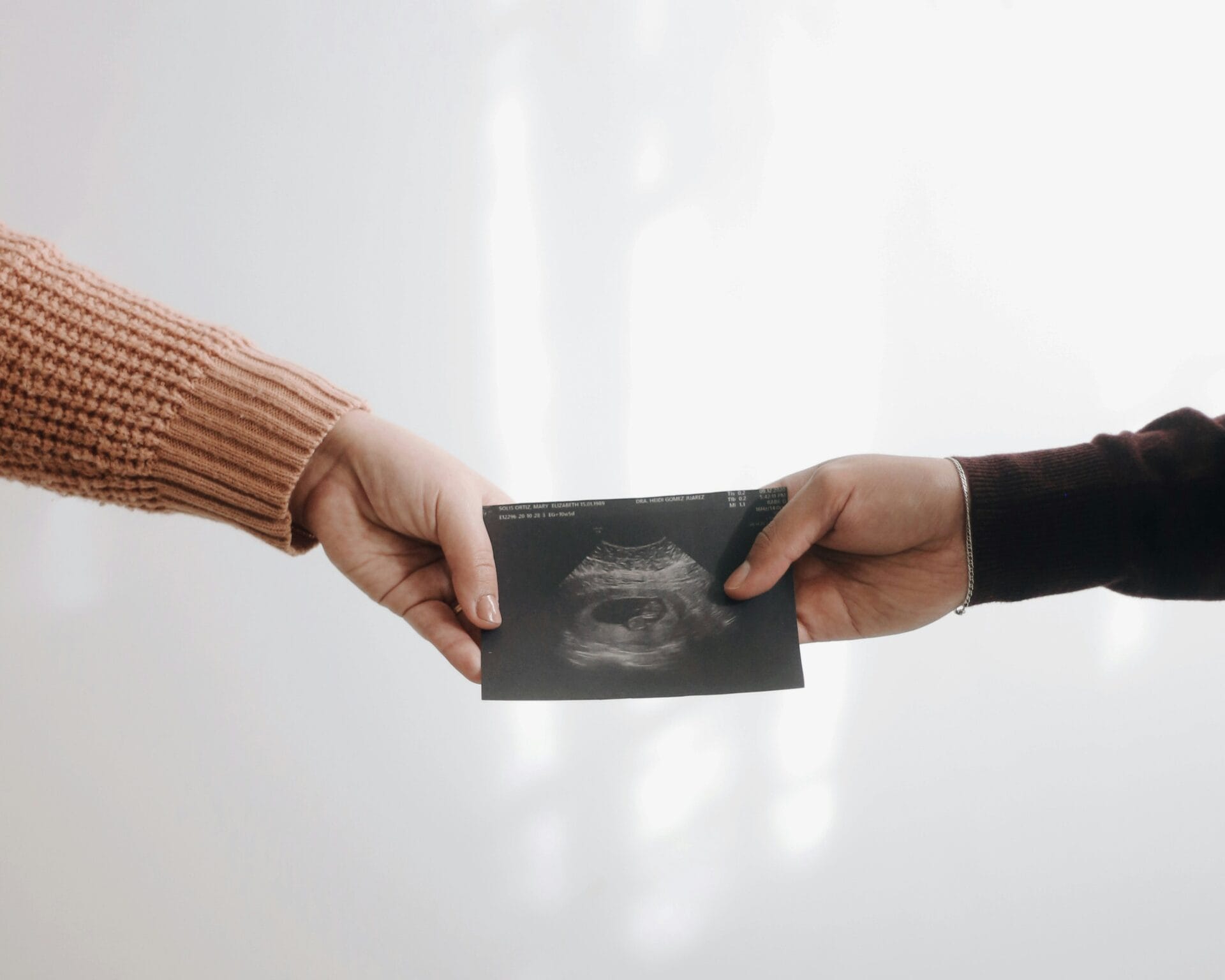
Young Mom Prayed for God’s Hand on Her Child – At Her Ultrasound Appointment, THIS Happened
11 Jul 2025
Letter to the FDA Regarding Chemical Abortion Drugs June 2020
10 Jul 2025

